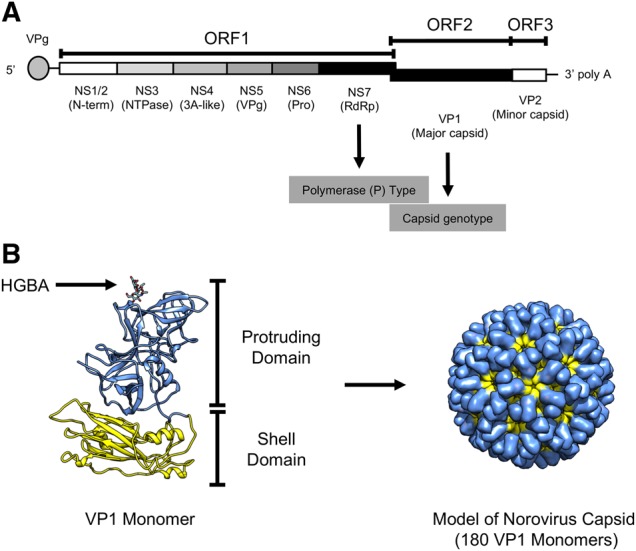Figure 1.

Norovirus structure and genome organization. (A) The ORFs and their encoded proteins are shown. ORF1 encodes six NS proteins involved in viral replication, ORF2 and ORF3 encode for the major (VP1) and minor (VP2) capsid proteins, respectively. The 5′-end of the genome is capped with the VPg (virion protein genome-linked) protein, while the 3′-end consists of an untranslated region and a poly-A tail. Genome regions utilized for norovirus characterization and typing include the RdRp and the major capsid protein (VP1). (B) Structural model of norovirus VP1 showing the protruding and shell domains. A model of the capsid (T:3) is shown at the right-side of the VP1. The molecular model of the VP1 was visualized using an X-ray solved structure (Protein Data Bank record: 1IHM) and rendered in Chimera (Pettersen et al. 2004).
